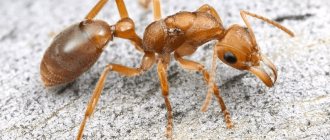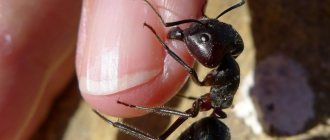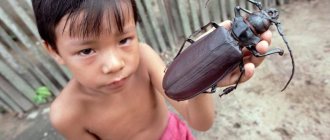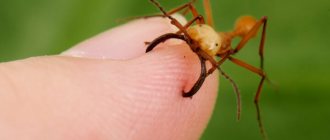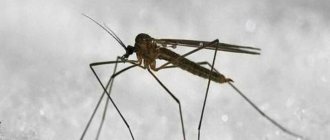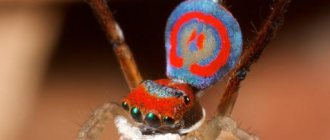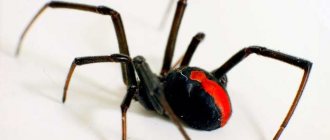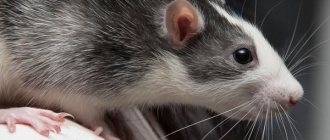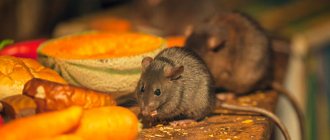The capybara is a mammal that belongs to the rodent order, just like mice, rats, domestic coffee pigs (also known as guinea pigs), chinchillas and squirrels. However, compared to the species mentioned, capybaras are very large animals. They can weigh up to 65 kg! The first mentions date back to the second half of the 18th century. They were described by the famous Swedish naturalist Carl Linnaeus. Interestingly, he included them in the pig family, which is why the capybara was considered a species of pig for many years. For this reason, rodents are still often called water pigs. The name "capybara" in Guarani means a creature that eats grass.
Origin
Capybaras originate from South America. In nature, they live mainly in wetlands - in the equatorial and monsoon forests of Colombia, Brazil and Venezuela. Because they easily adapt to different conditions, they can also be found in Argentina and Uruguay. Rodents choose areas near water bodies. They also tend to stay in human settlements, where they have plenty of food and are less exposed to danger from predators. The animals are not reared on a mass scale, although farms of these animals can be found in South America. They are stored there for the purpose of shelter. An even rarer occurrence is breeding as pets. These exotic creatures can often be found in zoos.
Appearance size
There are two types of rodents - large and small. The latter is limited to Panama and northern Colombia. Therefore, when talking about a capybara, we most often mean the large capybara, which is usually found in South America. This is the largest living rodent. Reaches its own weight up to 65 kg (the record holder weighed 91 kg!). Its length is on average 120 cm, and its height at the withers is up to 65 cm.
They have a rather stocky body structure, a large head with eyes, nostrils and small ears located at the top, which makes it easier for the animal to swim. The short, strong front legs are four-toed and the hind legs are three-toed with claws and a rudimentary tail. Capybaras' toes are connected by webbing, another feature that makes capybaras excellent swimmers.
Like all rodents, they have strong incisors that will last a lifetime. This animal is endowed with excellent vision, hearing and smell. The capybara's skin is thin, brown, covered with sparse, coarse hair with a red-brown color on the back and yellow-brown on the belly. Unlike other rodents, sweat glands are found in the skin of capybaras. Males have scent glands on their faces, from which yellowish secretions with a musky odor come out during the mating season to attract females.
What does it eat?
Capybaras are herbivores and very “picky” animals - most of their diet consists of only a few species of plants. Capybaras feed mainly on coastal grasses. Moreover, they are coprophagous - they obtain some of their nutrients from their own excrement. Because large rodents sometimes destroy human crops in search of food, capybaras are considered pests in South America.
Lifestyle
They live near bodies of water. This allows them to cool down in hot weather, since thin hair does not provide them with enough protection from the sun. During the hottest part of the day, capybaras usually do not leave the water, which is also an excellent shelter from predators. These rodents are excellent swimmers and can hide under water for up to 5 minutes when attacked. Capybaras don't cope as well on land as they do in water—they run rather clumsily, don't dig holes, and can only hide from threats in tall grass.
These are herd animals. They usually live in family groups consisting of one male, several females and cubs - about 10-30 individuals in total. In a threatening situation, for example, during a drought, they can form even several times larger herds. Capybaras communicate using original sounds, which are the subject of research by scientists.
How does it reproduce and how long does it live?
Capybaras reach reproductive capacity at approximately 1.5 years. They can breed all year round. Mating occurs in water. Pregnancy in capybaras lasts 5 months, and up to 7 cubs are born in a litter (usually 3-5). They remain for 2-4 months under the care of their mother, but can be fed by all the females in the herd. Females do not build nests or protect their young in any way, so in nature most of them fall prey to predators.
An adult capybara lives on average 4 years, although in optimal conditions it can live up to 10 years. Rodents often suffer from vitamin C deficiency, are susceptible to numerous infections and, above all, are easy prey for many predatory animals (including jaguars, anacondas and eagles). Wild capybaras are also often killed by humans.
Is it possible to tame a capybara?
These rodents are very smart, social animals. They are easy to tame and can even be taught to follow simple commands. Unlike many other species of exotic animals, capybara breeding is legal in Russia. Unfortunately, keeping them at home is almost impossible. Capybaras need a lot of space and many requirements that must be met in order to be healthy and happy.
First of all, these animals cannot be bred alone. They need their herd because loneliness is a big source of stress for them. In summer, they should have a fenced area (at least 20 sq.m per couple), with constant access to the shade and a pond at least 3 meters deep. In winter they cannot be outside because they are too cold. Capybaras also need to be provided with special food, which is not usually available in Polish stores. Natural grazing is too risky, as rodents have a very sensitive digestive system and can easily become poisoned.
photo source
Interesting Facts
He is about the same size as a Labrador Retriever.
They are capable of speeds of up to 35 kilometers per hour. Like a very fast running man.
They like to express themselves by mumbling, whistling, whining, and even biting with their teeth, depending on what they are trying to convey.
Just like rabbits, their long teeth are ideal for cutting food.
They can dive and stay underwater for up to 5 minutes, often falling asleep in the water, keeping their nose on the surface of the water.
Although their population is believed to be stable, in some areas the animals are seriously threatened by people who hunt them for their skin.
They feed on grass and aquatic plants, eating 3-3.5 kg per day.
Females are heavier than males.
The scientific name (Hydrochoerus) comes from the Greek words (hýdor - water) and (choíros - pig).
The largest individual living in the wild weighed 91 kg.
Animals have 4 toes on their front legs and 3 on their hind legs.
Front teeth grow throughout your life.
They eat their excrement, which is a source of bacteria in the intestinal flora.
Feeling danger, it can start barking like dogs.
They love to cuddle with most friendly animals.
Interesting for you:
Capybara
This large rodent is closely related to guinea pigs. But unlike the latter, it grows to 100-135 cm in length with a height of about 60 cm. The body weight of a female capybara is 28-67 kg, the weight of a male varies between 30-63 kg.
Visually, this huge rodent looks like a giant guinea pig. It has a massive head, relatively short front legs, small ears, small eyes, membranes between the toes and a large body with hard brown fur.
Despite its enormous size, the giant rodent has a peaceful and easygoing disposition. It feeds on plant foods and lives near bodies of water. The giant is not afraid of people, but prefers to settle away from populated areas.
Interesting! Translated from the language of the South American Indians, the name of this large rodent means “lord of the grass.” And for their lack of fear of water and the ability to swim well, capybaras began to be called capybaras.
Spreading
The largest rodent in the world lives in almost all countries of Central and South America, preferring a tropical, humid climate and the obligatory presence of various bodies of water - rivers, lakes, ponds. Climatic conditions, namely seasonally constant, high air and water temperatures, determine the boundaries of the animal’s living area.
The climate data below for the year in Caracas (Venezuela) is necessary for the life of capybaras.
Air and water temperatures at 0C by month, number of rainy days:
| Jan. | Feb. | March | Apr. | May | June | July | Aug. | Sep. | Oct. | Nov. | Dec. |
| 22 | 22 | 24,5 | 25,5 | 25 | 26 | 26 | 27 | 28 | 27 | 26 | 25,5 |
| 24,5 | 24 | 25 | 24,5 | 26 | 26 | 26 | 28 | 28 | 28 | 27,5 | 26,5 |
| 3 | 4 | 7 | 14 | 18 | 19 | 19 | 26 | 27 | 26 | 18 | 13 |
The water pig also feels comfortable in wooded mountains (up to 1300 m in height) and in mangrove swamps.
Don't miss the most popular article in the section: Mariana Trench on the world map. Where it is located, what makes it unique, show what’s inside.
Crested porcupine
The spiny large rodent is found in Iraq, Transcaucasia, China, North Africa, India and Europe. It grows to 85-90 cm in length and weighs about 25-27 kg. The crested porcupine has a very unusual appearance.
The animal's gigantic, stocky body is covered with spines that protect it from enemies. They pierce the enemy and cause him severe pain.
The origin of the largest rodent on Earth
Archaeological finds indicate that rodents once lived in South America, among which were giants the size of a large bear and weighing up to 1 ton. They felt at ease until the rapprochement of the two continents occurred.
After the formation of the Isthmus of Panama (3 million years ago), the flora and fauna of South and North America were forced to interact. The massive migration of cats from north to south led to a decrease in populations, and even to the complete destruction of many unusual animals.
A sad fate befell all the capybara's relatives; only she managed to adapt to new living conditions. Literally, “capybara” is translated from the “Tupi language” (close to the Indian language) as “fine grass eater.”
The largest rodent in the world is the capybara.
The multilingual local population also calls it:
- capigua;
- caprincio;
- poncho;
- chiguire.
The scientific name of the only member of the Capybara family is Hydrochoerus hydrochaeris (Water Pig).
Common beaver
This large rodent grows up to 130 cm in length and weighs about 30-32 kg. The common beaver has become famous as an excellent builder of river and lake dams. The distribution range of this large rodent stretches from the Atlantic to the Mongolian steppes.
Interesting! The image of beavers is found on the coats of arms of many European cities. And in Russia, a whole series of coins was issued in honor of these large animals.
The biggest rat in the world
The largest rat, Bosavi, lives on the island of Papua, New Guinea. These rodents were found by scientists in the extinct Bosavi volcano.
The animals were not afraid of people, since they did not imagine that they could pose any danger to them, so they calmly allowed themselves to be measured and weighed. Their body length is approximately 1 meter and their weight is about 15 kilograms.
The rat still does not have an official name; it is temporarily named after the Bosavi volcano. In our time, this is the largest specimen.
Mara
These large rodents are distantly related to guinea pigs and belong to the half-ungulate family. They inhabit the rocky plateaus of Argentina and Patagonia, where they are called lowland hares. Giant animals weigh up to 20 kg with a body length of about 50 cm.
Externally, large animals vaguely resemble kangaroos. Thanks to their long and strong hind legs, large rodents easily cover long distances. When running, the animal simultaneously uses all 4 limbs and moves in zigzag leaps.
Habitat
In the wild, the capybara can be found in temperate latitudes or tropical forests of America (Central and South). They live in the northeastern part of Argentina and territories from Panama to Uruguay. They live on the banks of reservoirs, since they simply need fresh water for normal life. The animals settle in huge colonies. In search of food, the capybara is able to travel vast distances.
Capybaras thrive in water and are considered excellent swimmers. Their nose and eyes are located so that water does not enter here while swimming. Having noticed the danger, the rodent is able to completely submerge under water. Only the nostrils will remain on the surface so that the animal can breathe. Natural enemies of the capybara are alligators, anacondas, dingoes, ocelots, caimans, etc. Birds of prey also pose a danger to capybara babies.
Massoutiera
The largest rodent from the comb-toed family grows up to 24 cm in length and weighs about 160-170 g. It is found in Algeria, the Republic of Chad, Nigeria and Mali.
The massoutiera is diurnal and lives in mountainous landscapes.
Important! Due to the development of livestock farming in regions where drought regularly occurs, the number of massiers has sharply decreased. Therefore, in 2015, the large rodent was classified as an endangered species and listed in the Red Book. To prevent the complete extinction of giant animals, several reserves have been opened in Africa that contain massiers.
Reproduction
Males and females reach sexual maturity at 15-18 months, gaining a weight of 30-40 kg. The mating season begins during the rainy season. Males mark plants, attracting females with their scent. Capybaras mate in water. The female's pregnancy lasts 150 days. They give birth on bare ground, without building burrows or shelters. The litter ranges from 2 to 8 cubs. They are born weighing 1.5 kg, with open eyes and fur, and teething. Within a few minutes they can stand, and after a few days they can feed on their own. The cubs receive mother's milk for up to 4 months.
The female brings one, less often 2, offspring per year.
In the group, kids are not divided into friends and strangers. Females carefully look after all children.
Pacarana
This rodent cannot be called the largest, however, it grows to 73-79 cm in length and weighs 10-15 kg. It has a massive body, a wide head, large eyes and rounded ears. The body of the animal is covered with coarse, sparse fur of a black or dark brown shade with white spots.
Pacarana lives in Peru, Bolivia, Colombia and Venezuela. Occasionally, a large rodent is found in Ecuador and Bolivia.
Pacarana cubs are born weighing 850-900 g. To protect future offspring from predators, females build nests in deep mountain or earthen crevices during pregnancy.
The largest rats in Russia
Rats are distributed throughout Russia. They live in natural conditions and settle in human dwellings. Species such as pasyuk and black live in Russia.
Pasyuki often live in basements, sheds with animals, and warehouses. They live in large numbers in landfills and garbage dumps, for this reason they are often carriers of various diseases. There are also numerous cases when pasyuki attacked people, but they do this for the purpose of self-defense. They have strong teeth, with which they can chew through concrete and metal. They are omnivores and reproduce very quickly.
Black ones prefer the southern regions of Russia and are found mainly in attics. In natural conditions they live near fresh water bodies. They love to nest on sea ships. They feed on fruits, vegetables, worms, insects and eggs.
Baybak
This large rodent belongs to the genus of marmots and lives in the Eurasian steppes. It is considered the largest representative of the squirrel family and grows up to 70-80 cm with a weight of about 10-13 kg. The baybak has a short tail, and its large body is covered with yellow fur.
The giant animal feeds on plant foods and gains a lot of weight before hibernation.
On a note. Boibaks often give birth to albinos. Such animals are instantly caught and kept as rare pets.
Cute pet
Before purchasing a capybara to live at home, you need to weigh your options and decide whether you can provide your pet with what it needs.
Namely:
- temperature conditions;
- a reservoir of considerable size;
- regular walks in nature.
Buying an animal
The sale of rodents is not prohibited.
Animals are most often brought to order from South America, but you can try to buy a capybara here:
- in a pet store;
- in the online store;
- by advertisement (from a private individual or breeders).
Buying a young animal will cost 100-260 thousand rubles. First of all, this is the cost of transportation and the procedure for processing all necessary documents.
Care
Keeping a capybara at home is not easy. The animal quickly gets used to the person and asks for his attention and care.
The owner should remember some features of caring for a water pig:
- The capybara, like any other pet, needs health monitoring, and therefore needs annual vaccinations. If you do not plan to breed rodents, then it is better to castrate the male at a young age, so that later, when he reaches puberty, he does not perceive the owner as an object of courtship.
- The tropical animal feels good in its native climate, that is, in warmth with high humidity. Living in the middle zone or in the north, it is necessary to create such conditions artificially.
- The capybara spends most of its time in water, where it needs to actively move, which means the reservoir must be of considerable size.
- The animal's walking area must be carefully fenced so that the freedom-loving pig does not leave the designated area, and is also protected from dogs. In the city, a calm animal walks well on a leash.
- Capybaras are unpretentious in food; their diet consists only of plant foods. They eat everything that grows, you can also use granulated food for rodents or dogs (the largest granule size), vitamin supplements are required. The animal must be given the opportunity to sharpen its teeth; tree branches and sticks are suitable for this.
- A sociable capybara asks for the attention of its owner. If there are other animals in the house, she will easily make friends with them, but in the absence of them she will be bored. It can show aggression (even towards a person) in case of self-defense. You will have to get used to the capybara's voice: it almost constantly makes many sounds, thus communicating with its fellow tribesmen or its owner. The range is quite wide: squealing, whistling, clicking, grinding, barking. They remain this way throughout their life in captivity (10-12 years).
- No care is required for the appearance of the animal. The capybara puts its body and fur in order on its own.
The most famous tame capybara
Capybara named JoJo has become the most famous rodent on the planet thanks to his good nature, photogenicity and global social network. Her page (its owner) had more than 120 thousand subscribers, and films with the YouTube star pig were watched by about 10 million viewers.
The capybara lived in America. Her owner, Kennedy, purchased the little piglet from a breeder for $800. It took me a long time to come up with a nickname; the animal ignored any appeal to itself. Finally, it responded to “Jojo.”
The last photos show that the not very thick hair of the water pig began to thin out more and more, and bald spots appeared. The owner commented on this fact: “He’s getting old.” But obviously JoJo was getting sick. In August 2022, he died, having lived only 5 years, which is short even for natural conditions.
Indian giant squirrel
This large animal is considered the most beautiful of all representatives of the squirrel family. It lives in trees and is diurnal. The large rodent has an original three-color coat and grows up to 65 cm with a weight of about 2.3 kg.
The Indian giant squirrel inhabits the forests of Hindustan and feeds on roots, leaves and fruits.
Musk kangaroo | 35 centimeters
The musk kangaroo (Tsepkonog) is similar in appearance to an ordinary rat. All limbs of the flailfoot are proportional and have weak, small claws. The maximum size of the musk kangaroo's body can reach 35 centimeters with a tail length of 12 cm. Tenaciopods prefer to live in dense thickets near water bodies. The musk smell characteristic of the animals became the reason for the name of the species - musky kangaroo. Females have a brood pouch where they carry their young for several months. The animal can move nimbly on the surface of the earth and climb trees. They choose insects and worms as food, but can also eat berries and root vegetables.
Yellow gopher
This large rodent grows up to 25 cm in length and weighs about 700 g. The giant gopher received its name for its monochromatic sandy-yellow coat. It is widespread in the Central Asian plains, Kazakhstan and the lower Volga region.
Rodents are the most numerous of all mammals. They differ from each other not only in physique or coat color, but also in size. These include the long-tailed small rat and the miniature nimble mouse, the giant Indian squirrel and the huge capybara.
Farm breeding
The largest rodent in some South American countries, particularly Venezuela, lives not only in the wild. There are capybara breeding farms around the world. They differ, first of all, in scale, that is, in the number of rodents raised. Small ones number 500-2000 heads, large ones – up to 30 thousand.
Why did farms choose to keep pigs instead of cows? The ongoing weather disasters on the planet have also affected the countries of South America: long periods of drought or floods have become more frequent here, which has a negative impact on the food supply for cattle. And capybaras are unpretentious and more economical.
They better assimilate the food they eat, process grass into protein better, and can even get enough of tree bark during a difficult period. The factor of animal reproduction is very important: cows give birth to one calf per year, which must be taken care of until it grows up. Rodents in their homeland breed 2 or even 3 times a year; all the females of the herd take care of the piglets; they do not require additional care from their owners.
Venezuelan farmers achieve profitability by following simple rules:
- Do not disturb (or create) the natural habitat for pigs.
- Animals under 18 kg are not slaughtered.
- Do not touch pregnant or farrowed females nursing cubs.
For example, the ElFrio farm, where cows and capybaras coexist peacefully, covers an area of 81 hectares. Pigs here are bred for meat, which is supplied to city markets and costs the same as beef. The demand for products is great and constant.
Venezuelan experts are confident that capybara breeding for meat production may soon surpass cattle breeding, that is, the industry is very promising. In addition to meat products, capybaras provide skin and fat, which is used in pharmaceuticals.
Soviet chinchilla
Despite the name, we are not talking about a chinchilla at all, but about a breed of rabbits that are bred for their fur. It was bred in the USSR. Our specialists crossed American chinchillas with different breeds and were able to increase the live weight of the animal to 5 kg.
In 1963, a new breed, the Soviet chinchilla, . Its representatives are distinguished by thick fur, high-quality skin, large size, good endurance and early ripening.
Their body is 60-70 cm long, they are silver or dark silver, the belly and part of the paws are black, and there is a border of the same color on the ears. An adult rabbit weighs from 3 to 5 kg, among them there are record holders who gained up to 7-8 kg.
Disease Prevention
The “Honey Candy” variety of cherry tomatoes is no different in its characteristics from large fruits. The immunity of this bush is very good, so it is rarely affected by any diseases.
It tolerates various diseases common in tomatoes well. Resists attacks by aphids, Colorado potato beetles and slugs. Nevertheless, timely treatment against diseases and pests is still necessary.
- (otherwise the gardener sees withered and yellowed leaves - this could be Phoma, in which case it is advisable to remove the leaves to avoid disease of the entire bush. It is necessary to constantly treat the plants with the preparation "Hom". You should also reduce the amount of nitrogen fertilizers and increase the amount of watering.
- Dry spotting is possible. To prevent it and spread to all plants, the bushes are treated with Antrakol, Consento and Tattu.
- It is plausible, but not frequent, that this tomato is attacked by slugs and mole crickets. A solution of hot pepper and mustard works well against slugs. Use 1 cone of dry mixture per 1 square meter.
- It is more difficult to fight a mole cricket. To achieve this, the soil should be weeded, loosened and mulched. It is also appropriate to use the drug “Gnome”.
- In a greenhouse, a plant may be susceptible to invasion by small whitefly butterflies. To counter this insect, use the drug “Confidor”. Manufacturers indicate the correct dilution of each drug in the packaging.
They note good productivity of tomatoes, as well as a long period of storage of fruits before harvesting.
The Honey Candy tomato is an excellent variety for professionals and amateurs alike. By following the rules of care, processing, glazing and feeding, everyone can achieve the ripening of a good and tasty harvest.
Nutria
Its other names are swamp beaver or koipu . " Nutria " is translated from Greek as "mouse-beaver". In appearance it resembles a rat of enormous size: the body grows up to 60 cm, the tail is 45 cm, it weighs from 5 to 12 kg. Males are usually larger than females.
She has a huge head with small ears and eyes, and a blunt muzzle. The tail is hairless, it is a kind of rudder that is used when swimming. The fur of this animal is waterproof and brown.
Nutria lives in South America, but it has been able to acclimatize in many countries. It is active at night. Lives in groups of 2-13 individuals.
Protect your property from rodents of different shapes and sizes
While you're unlikely to encounter the world's largest rat or mouse in any English-speaking country, small pests can still find their way onto your property. Whether it's rats or mice invading your home or moles and gophers burrowing under your lawn, rodents can carry viruses and cause many other problems.
As soon as you see signs of presence, use Victor® traps and repellents. The Victor® catalog contains a wide selection of products that will quickly and efficiently solve all problems.
Mice of Gough Island
Situated in the South Atlantic, Gough Island has been overrun by approximately two million mice. Uninhabited areas have become an ideal breeding ground for them. It is noteworthy that rodents are twice as large as their counterparts living in the civilized world. Every year, 1.6 million petrel chicks are born on the island, and 1.2 million of them are eaten by mice.
Shearwaters are also eaten by black rats that have settled on the Tristan da Cunha archipelago, where, as on Gough Island, these rodents have no natural predators. Experts, in turn, continue to search for the best method for exterminating these pests, because even one surviving pregnant female can give birth to new rats that will multiply quickly. But scientists do not lose hope. In 2009, complete eradication of rats was achieved on Rat Island (Alaska), where rodents lived for 230 years.
